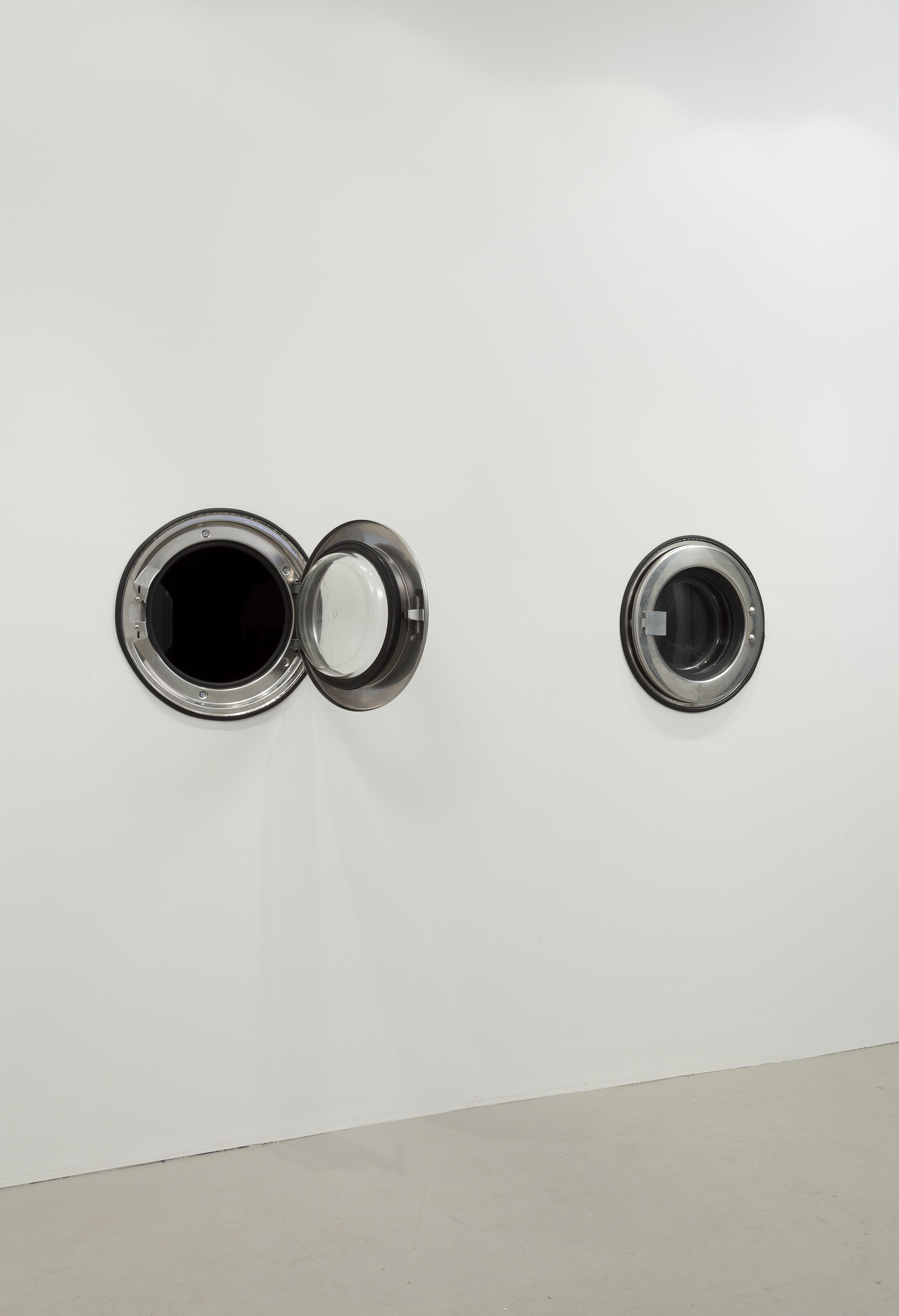“How to Remain Human” serves as the centerpiece to summer exhibitions at MOCA that scramble genre and geography
By Carlo Wolff

Michelangelo Lovelace, Standing at the Fork in the Road at Temptation and Salvation, 1997, acrylic on canvas, 51¼ x 90¾ inches. Courtesy of the artist.
Summer at MOCA Cleveland kicks off June 6 when Chicago artist Tony Lewis’s “free movement power nomenclature pressure weight,” six new, large works from a series of Gregg Shorthand drawings, opens in the Toby Devan Lewis Gallery on the second floor. Six days later, a much larger, multiartist exhibition, “How to Remain Human,” will take over the Mueller Family Gallery on the fourth floor of the striking, modern structure anchoring Cleveland’s Uptown district.
In fact, “How To Remain Human” will spill all over the museum, from the atrium on up the stairs, suggests Megan Lykins Reich, who is curating it along with Rose Bouthillier. Reich is MOCA’s deputy director of programs, planning and engagement; Bouthillier is associate curator. Bouthillier also organized the Tony Lewis display.
The exhibitions promise to scramble media, with text smearing sculpture, graphics caroming off history, cartoons, comics and video cross-fertilizing in the same space.
“As much as possible, in principle, this show is meant to provide resources and space for our artists in our region to create new work” or expand on existing work, Reich said in late April. “So we are always working to the point where we have to pick up new work. … It is a show that is very lively in its production,” she says, laughing.
“How To Remain Human,” which takes its title from the d.a. levy poem, “Suburban Monastery Death Poem,” will feature the work of 14 artists from places including Cleveland, Detroit, New York, Charlottesville and Richmond, Va. It also will display videos by the Pittsburgh-based collective Dadpranks. While most of the artists are from the Mid-Atlantic region, what makes it a Cleveland exhibition is its sensibility, Reich suggests. It’s also a continuation of “Realization is Better than Anticipation,” an exhibition Reich and Bouthillier curated in summer 2013.

Derf Backderf, “A Man Gotta Do,” 1991, excerpt from “The City” comic strip, pen and ink. Courtesy of the artist.
“The point of these exhibitions is to examine and advance those artists … and in creating dialogues across these cities,” Reich says. “We see our region more broadly as a center of artistic activity in its own right. We think this series of shows, not just through the collection of artists we select, but also through engaging writers to write critically on the artists, will create dialogue around the region.”
Bouthillier, meanwhile, has been looking into the work of d.a. levy, a controversial Cleveland artist who flourished in the 1960s, was busted for obscenity (the charges were eventually dropped) and fatally shot himself in 1968. He was alternative before the term gained currency, underground before that term carried cachet.
Bouthillier says she has been poring over levy’s writings “and the visual material he produced that is less well known, a lot of collages, paintings, drawings, sketches,” and she can see “the development of his practice very early from the mid- to late ’60s, moving from conventional styles of poetry to increasingly wilder, more abstract poetry.”
Eventually, levy came to use the page “as a sort of space for visual composition, much more angry, much more political,” Bouthillier says.
A contemporary artist making his MOCA debut in “How To Remain Human” is John Backderf, aka Derf (and/or Derf Backderf), a Cleveland Heights resident who scored worldwide with “My Friend Dahmer,” his 2012 graphic novel about serial killer-to-be Jeffrey Dahmer.
On April 21, Derf said he’s preparing “a showcase of recent work, which is all stories about the Rust Belt Apocalypse that we live in,” for the MOCA show. That day, he also learned he’d won yet another French prize for his Dahmer book – and yet another French award for “Punk Rock and Trailer Parks,” his appropriately lurid graphic novel of the 1980s rock ‘n’ roll scene in Akron.
“God, man, France just rules as far as comics go,” Derf says. CV
*Lead image: d.a. levy, “Agent from Vega H.S.,” 1967, collage. Courtesy of the d.a. levy Collection, Michael Schwartz Library, Cleveland State University, and the Cleveland Memory Project.










